8 /10 1 Votes8
8.5/10 IGN Initial release date 29 August 2003 | 7/10 Steam 86% GameFAQs Producer(s) Makoto Yoshizumi Writer(s) Takumi Miyajima Series Tales | |||||||||||||||||||||||||||||||||
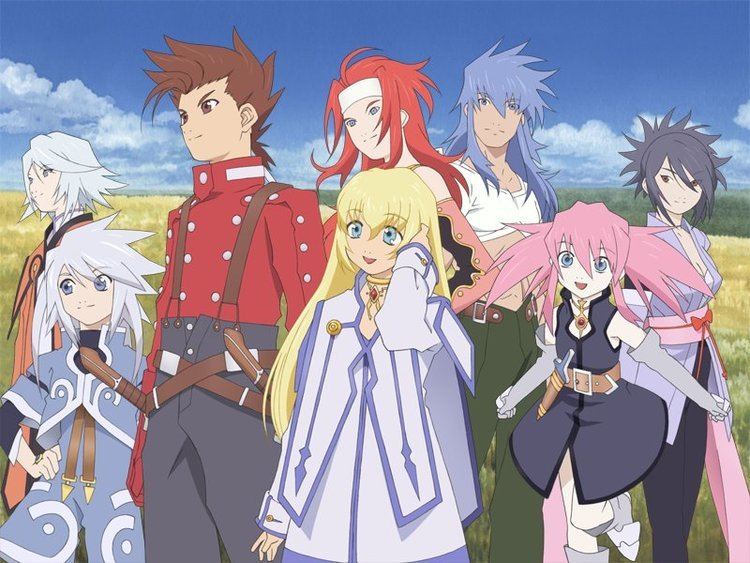 | ||||||||||||||||||||||||||||||||||
Director(s) Yoshito HiguchiKiyoshi NagaiEiji Kikuchi Composer(s) Motoi SakurabaShinji TamuraTakeshi Arai Designers Kōsuke Fujishima, Takashi Hasegawa Similar Tales games, Namco games, Console role-playing games | ||||||||||||||||||||||||||||||||||
Tales of symphonia hd part 54 dragon you down
Tales of Symphonia (Japanese: テイルズ オブ シンフォニア, Hepburn: Teiruzu Obu Shinfonia) is a Japanese role-playing game released for the Nintendo GameCube on August 29, 2003 in Japan. It was published by Namco and is the fifth core product of the Tales series. The game was localized and released in North America on July 13, 2004 and in Europe on November 19, 2004. In Japan, the game was ported for the PlayStation 2 with additional content and was released on September 22, 2004.
Contents
- Tales of symphonia hd part 54 dragon you down
- Tales of symphonia hd part 1 oracle
- Gameplay
- Plot
- Development and release
- Scenario
- Sequel and Chronicles release
- Manga
- Books
- Audio CDs
- Anime
- Reception
- References
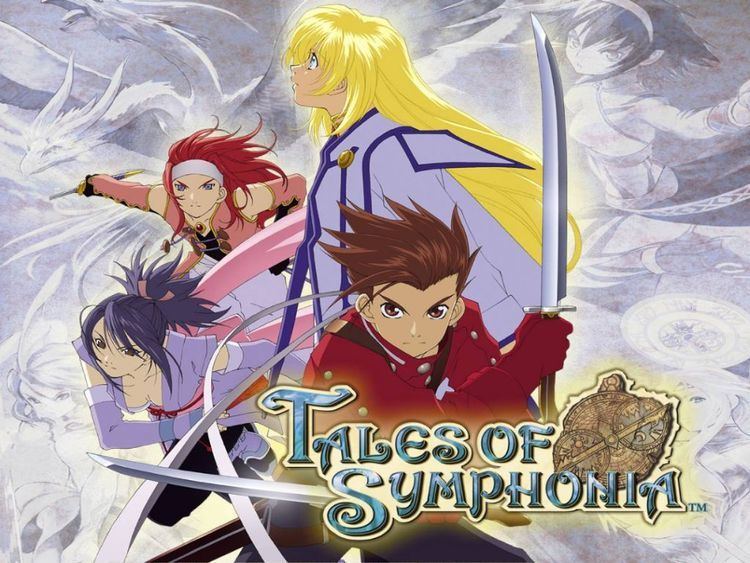
The game takes place in a fictional world called Sylvarant and follows Lloyd Irving. Lloyd accompanies his childhood friend, Colette Brunel, who is destined to go on a journey to save their world. As their journey progresses, they learn that saving Sylvarant endangers Tethe'alla, a world parallel to their own. The game's central theme is Kimi to Hibiki au RPG (君と響きあうRPG?, lit. "RPG that resonates with you").
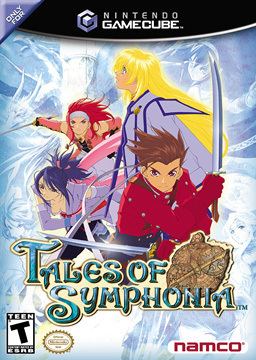
The game's reception was generally positive with critics praising the gameplay but criticizing the plot. It received a Japan Game Awards in 2003 and had received re-releases under the Player's Choice and PlayStation 2 the Best labels. In the United States, over 100 thousand copies were sold during the first two weeks and has sold over a million copies worldwide.
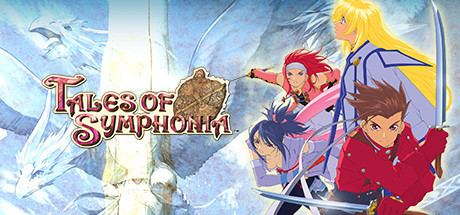
Since its release, Tales of Symphonia spawned a substantial media franchise in Japan. The game has been adapted into seven manga collections, two novel series, seven drama CDs, and an OVA anime series. A sequel entitled Tales of Symphonia: Dawn of the New World was released for the Wii in 2008. Tales of Symphonia and its sequel was collected as a PlayStation 3 high definition release in Tales of Symphonia Chronicles in 2013. A Steam version was released on February 2, 2016.
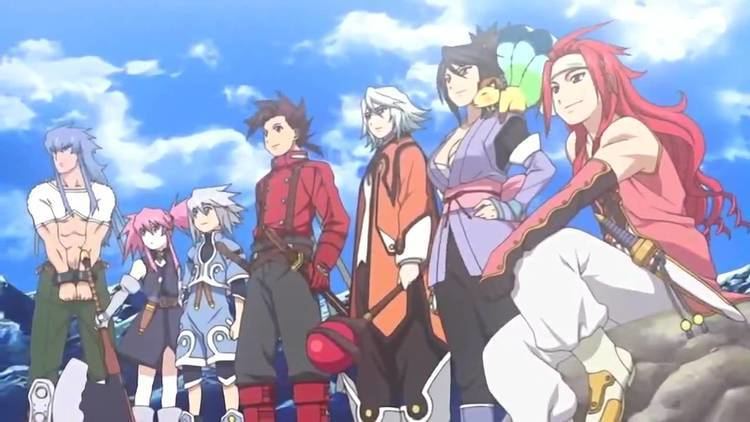
Tales of symphonia hd part 1 oracle
Gameplay

Like previous installments in the Tales series, Tales of Symphonia consists primarily of three major areas: an overworld field map, town and dungeon maps, and a battle screen. The overworld map is a 3D model, featuring a scaled-down version of the game's fictional world which the player travels through to reach the game's locations. As with preceding games in the series, the world map can be traversed by foot, on the party's quadrupedal pet Noishe, and on flying vehicles known as Rheairds. On field maps, characters are directed across realistically scaled environments. The battle screen is a 3D representation of an area, in which the player commands the characters in battles against CPU-controlled enemies.
On the overworld and field maps, various skits between the characters can be viewed. They involve animated character portraits, subtitles, and, in the Japanese version, full voice acting. Skits concern anything from character development to side details. Overworld map skits affect Lloyd's relationships with other party members. The player will be able to make certain decisions that imperceptibly affect how the other characters think of Lloyd. Some of these choices have minor ramifications for the game's storyline.
During battle sequences, the game uses the Multi-Line Linear Motion Battle System. Four characters from the party are chosen to battle; those not controlled by a player are guided by artificial intelligence with instructions set by the player beforehand. Damage dealt to the opponent fills a "Unison Gauge". When this is full, a "Unison Attack" can be triggered, allowing the party to use techniques simultaneously on a single enemy. When certain techniques are combined, a special attack results in additional damage.
After battle, a currency called Grade is awarded or subtracted based on specific criteria that are fulfilled in battle. It is used to purchase bonuses during New Game Plus. Players are also prompted to cook food after battles if they have the materials. Cooking recipes determine the benefits received such as health recovery. The degree of the benefit is determined by which character is chosen to cook.
Tales of Symphonia's skill system is built around the use of "EX Gems", which come in four ranks. Each character can equip up to four EX Gems and set abilities to those gems. The abilities determine if the characters will learn Strike or Technical techniques and spells. Combinations of EX Gem abilities can also grant additional abilities called "EX-Skills". The development of a character's attributes is determined by their equipped "Title". Titles are earned through story progression, side quests, or completion of miscellaneous criteria.
Plot
Lloyd Irving and his friend, Genis Sage accompany the chosen, Colette Brunel and her guardians, Raine Sage and Kratos Aurion on her journey of world regeneration. The purpose of the journey is to replenish Sylvarant with mana, a necessary energy to their survival. The path of the journey consists of five temples which must be unsealed by Colette. On their journey, they meet Sheena Fujibayashi who comes from Tethe'alla, a world parallel to Sylvarant. She tells them about how the two worlds vie for each other's mana through the journey of regeneration. Hoping to find answers from the angel Remiel, they party meets him at the final seal and are betrayed by Remiel and Kratos; both are revealed to be part of Cruxis, an evil organization led by Mithos Yggdrasill.
The party leaves for Tethe'alla to search for a way to save both worlds and are joined by Zelos Wilder, Presea Combatir, and Regal Bryant. The party learns that awakening the Summon Spirits in both worlds will sever the mana tie between them. Believing that to be the answer, they successfully sever all mana ties between the two worlds. Their actions instead destabilize the Great Seed, the supplier of mana to both worlds, causing it to grow and engulf Sylvarant at an exponential rate. After the party re-stabilizes the seed, they learn from Yuan Ka-Fai about the origins of Sylvarant and Tethe'alla and how they used to be one world but was split by Mithos with the Eternal Sword; the party realizes they can save the world if they wield the Eternal Sword, merge the worlds, and germinate the Great Seed. They decide to confront and defeat Mithos before seeking the Eternal Sword.
Kratos is revealed to have been gathering materials to have Lloyd use the Eternal Sword. He succeeds but Mithos survives his apparent death and possesses a member from the party before fleeing to the comet Derris-Kharlan. Mithos attempts to take the Great Seed with him but is foiled and killed by Lloyd. Using the Eternal Sword, Lloyd merges Sylvarant and Tethe'alla together and germinates the Great Seed into a Giant Kharlan Tree to supply the world with mana.
Development and release
The game was first announced on May 8, 2002 by Namco to be one of the many titles it would be releasing on the Nintendo GameCube. Namco stated it would be a part of the Tales of Phantasia series and expected comics, animation, drama CDs and novels to be spun off from the game. Its name was revealed to be Tales of Symphonia in February 2003. An April 2003 edition of Famitsu revealed the game has been in development for two years, its developers are the same from Tales of Eternia, the game will have the most main characters in the Tales series, and will be the first 3D game in the series. During Electronic Entertainment Expo 2003, a North American localization was confirmed. A conference by Namco on June 9, 2003 revealed the game will be on two disks and its theme song will be "Starry Heavens" by Day After Tomorrow. To celebrate its release in Japan, the game was bundled with a symphonic green Nintendo GameCube. For the North American version, the localization producer replaced Starry Heavens with an orchestral anthem and focused on hiring professional voice actors to dub the game in order to appeal to the Western audience. The game was released in Japan on August 29, 2003 and was localized in North America and Europe on July 13, 2004 and November 19, 2004 respectively. The game was re-released in North America under the Player's Choice label on July 19, 2004.
During the second week of April 2004, Weekly Shōnen Jump announced a PlayStation 2 port of Tales of Symphonia. It received new in-game additions and its theme song is "Soshite Boku ni Dekiru Koto" (そして僕にできるコト?, lit. "And Thus, I Can Do It") by Day After Tomorrow. It was released exclusively in Japan on September 22, 2004 and re-released under the PlayStation 2 the Best label on July 7, 2005.
Scenario
Takumi Miyajima, the game's writer, explained Tales of Symphonia was planned to create a "unique symphonia", dependent on the player's choices and the affection system. Miyajima wrote many scenarios, with the most significant events centered on Zelos Wilder. Originally, Zelos' death was supposed to be canon. His survival would have been dependent on the affection system: He would die early on if he was ranked the lowest in the affection system, would die at the end if he ranked in the middle, and would only survive if he ranked the top. However, the development staff suggested to have Kratos Aurion return to the party and the team discussed how it would work. The change in scenario had Miyajima rework Zelos' death into a non-canon path of the story. While generally a self-contained story, Symphonia apparently takes place within either the same or a similar timeline to the first Tales game, Tales of Phantasia.
Sequel and Chronicles release
The sequel Tales of Symphonia: Knight of Ratatosk (テイルズ オブ シンフォニア ラタトスクの騎士, Teiruzu Obu Shinfonia Ratatosuku no Kishi), localized in English as Tales of Symphonia: Dawn of the New World, was announced on July 20, 2007 for the Wii. It was released in Japan and North America in 2008 and in Europe a year after.
Tales of Symphonia Chronicles was announced on June 1, 2013 for the PlayStation 3. It contains Tales of Symphonia and Tales of Symphonia: Dawn of the New World with remastered graphics and additional content. It was released in Japan on October 10, 2013, and it was released in North America and Europe on February 2014 as both a retail version and download release, with the option to purchase Tales of Symphonia as a standalone release.
Manga
Tales of Symphonia spawned seven manga adaptations after its release: six anthology collections and a traditional manga series.
The first anthology collection, Tales of Symphonia Comic Anthology, consists of five volumes which were released between November 25, 2003 and February 25, 2006 by Ichijinsha. The second anthology collection, Tales of Symphonia Yonkoma Kings, is a yonkoma. It consists of five volumes released between November 25, 2003 and December 25, 2006 by Ichijinsha. A third anthology collection entitled BC Anthology Collection Tales of Symphonia had two volumes published by Mag Garden on February 2005 and 2007. The fourth anthology collection is BC Anthology Collection Tales of Symphonia Yonkoma Short Comic Collection and consisted of a single volume which was released by Mag Garden on October 10, 2007. The fifth anthology collection is Super Comic Theater: Tales of Symphonia. It consisted of two volumes which were released by Square Enix on May 27, 2005 and September 16, 2005. The sixth anthology collection is Tales of Symphonia Comic Anthology: The Best is a single volume released on June 5, 2010 by Ichijinsha.
The manga series by Hitoshi Ichimura was titled Tales of Symphonia and was an adaptation of the game's storyline. The first four chapters were serialized between the April and July 2005 editions of Monthly Comic Blade. Future chapters were released in tankōbon volumes by Mag Garden thereafter. Six volumes were released: the first was released on August 10, 2005 and the last two were released on July 10, 2007.
Books
Tales of Symphonia has spun off two novel series adaptions, four strategy guides, a character book, an official scenario book, and an art book. The first novel series is titled Tales of Symphonia and is written by Kiyoshi Yuki. It consisted of three novels released between November 21 and December 20, 2003 by Shueisha. The second novel series is titled Tales of Symphonia: Radiance of Time (テイルズ オブ シンフォニア 久遠 の輝き, Teiruzu Obu Shinfonia Toki no Kagayaki) and is written by Sera Yajima. It consists of four volumes released between December 20, 2003 and June 19, 2004 by Enterbrain. An after story by the same author was released on September 18, 2004.
Two strategy guides under the V Jump Books brand were published by Shueisha: the Gamecube guide was released on August 29, 2003 and the PS2 on September 22, 2004. Namco Bandai Games released two official strategy guides on October 1, 2003 and October 27, 2004 for the Gamecube and PS2 respectively. Tales of Symphonia Illustration: Kosuke Fujishima's Character Work is a book by the game's designer, Kōsuke Fujishima, and was released on January 26, 2004 by Ichijinsha. It provides details on the characters' back story and how their design came to be. Tales of Symphonia Official Scenario Book was released on June 26, 2008 by Namco Bandai. The book details the history of the world and characters. Tales of Symphonia The Animation Visual Complete Picture Book is an art book for the anime released on March 28, 2013 by ASCII Media Works.
Audio CDs
Seven drama CDs based on the game's plot were produced by Frontier Works. Drama CD: Tales of Symphonia (A Long Time Ago) 1, 2, and 3 are stories preceding the game. They were released between July 23, 2004 and September 24, 2004. Drama CD: Tales of Symphonia Anthology 1 (Rodeo Ride Tour) First Part and Second Part follow Sheena Fujibayashi and Zelos Wilder as they tour the world a year after the events of the main game. The two CDs were released on May 25, 2005 and June 24, 2005. Tales of Symphonia Comic Market 78 and Tales of Symphonia Comic Market 79 are side stories with guest characters from Tales of Vesperia and Tales of Graces, respectively.
Tales of Symphonia Original Soundtrack was published by DigiCube on October 1, 2003 and consists of 4 discs. It debuted at 98 on Oricon's charts. The soundtrack was re-released on October 27, 2004 by King Records (Japan) for the PS2 port of Tales of Symphonia.
Anime
Tales of Symphonia The Animation (テイルズ オブ シンフォニア The Animation, Teiruzu Obu Shinfonia The Animation) was an OVA series animated by Ufotable and produced by Geneon Universal Entertainment and Frontier Works. It consists of four episodes which were released direct-to-video on four separate DVDs on June 8, August 10, October 24, and December 21 of 2007. They were later released in a Blu-ray Disc collection on September 26, 2008. The series later rereleased on Universal Media Disc between June 25 and July 23, 2010. On May 8, 2010, the series were aired on AT-X as a promotion to the sequel of the series. The episodes used three pieces of theme music: The opening theme is "Almateria" by Eri Kawai and the two ending themes were "Negai" (願い?, lit."Wish") by Kaori Hikita and Uchi e Kaerou (うちへ帰ろう?, lit. "Let's Go Home") by Nana Mizuki.
The sequel series, Tales of Symphonia the Animation: Tethe'alla Episode (テイルズ オブ シンフォニア The Animation テセアラ編, Teiruzu Obu Shinfonia The Animation: Teseara hen), was announced during Tales of Festival 2008. It consists of four episodes which were released on March 25, May 26, September 23, 2010 and February 25, 2011. All four episodes received an early screening: The first was screened on March 13, 2010 in Fukuoka and was hosted by Music Plaza Indo; The second on May 4, 2010 in Tokushima, Tokushima by Ufotable; the third on September 17, 2010 in Yokohama by Animate; and the fourth on February 20, 2011 in Roppongi by Toho. The first two episodes were later aired on September 12, 2010 on AT-X. The episodes used the opening theme "Tenkuu no Canaria" (天空のカナリア?, lit."Canary in the Sky") by Nana Mizuki and the ending theme "Inori no Kanata" (祈りの彼方?, lit."Beyond the Prayers") by Akiko Shikata.
The second sequel, Tales of Symphonia the Animation: The United World Episode (テイルズ オブ シンフォニア The Animation 世界統合編, Teiruzu Obu Shinfonia The Animation: Sekai Tōgō-hen), concludes the anime's plot. It consists of three episodes released directly to DVD and Blu-ray on November 23, 2011, June 20, 2012, and October 24, 2012. All three episodes had early screenings: the first was screened between September 23 and September 25, 2011 by Cinema Sunshine in Ikebukuro; the second on May 3, 2012 in Tokushima by Ufotable; and the third is on September 29, 2012 by Cinema Sunshine in Ikebukuro. The episodes use four pieces of theme musics: an opening theme "Ho-n-to-u-so" (ホ・ン・ト・ウ・ソ?, lit. "Truth and Lies") by Misono and three ending themes, "Ta ga Tame no Sekai" (誰ガ為ノ世界?, lit. "A World for Someone Else"), "Ibitsu" (歪?, lit. "Distortion"), and "Hikari furu basho de ~Promesse~" (光降る場所で~Promesse~?, lit. "At the Place Where the Light Falls ~Promise~"), all by Akiko Shikata.
A Blu-ray box set containing all three series was announced on June 1, 2013 and released on November 6, 2013.
Reception
Tales of Symphonia garnered generally positive reception from critics. Over 100,000 copies were sold in the United States during the first two weeks after its release. In December 2007, Namco announced that the GameCube version had sold 953,000 copies worldwide, and the PlayStation 2 port had sold 486,000 copies in Japan. The bargain reissue for the PlayStation 2 in 2005 sold almost 50,000 copies in Japan by the end of 2006. Its total worldwide sales across its original platforms have reached 1.6 million as of 2008, making it the best-selling Tales title to date. The 2016 PC release has sold about 150,000 copies on Steam as of December 2016. The game has appeared on many top game rankings and received a Japan Game Awards in 2003 for excellence. The January 2009 issue of Game Informer listed it at #24 in its "Top 25 GameCube Games". Nintendo Power ranked Tales of Symphonia 107th in a list of "Top 200 Nintendo Games Ever". IGN users placed it 75th in a Top 100 Games list, while GameFAQs users put it at 81st in a similar list.
Critics have praised the game for its cel-shaded art style and real-time battle system. 1UP, GameSpot, GameSpy, IGN, and X-Play, applauded the amount of details in the scenes with GameSpy noting the steady 60 fps. GameSpy described the battle system as "wonderfully fast and to the point" while X-Play noted its accessibility and potential to attract non-RPG gamers. Meanwhile, the story and audio have received negative criticism. Eurogamer, GameSpot, GameSpy, IGN, and X-Play criticized the plot for being cliché and un-engaging. The reviewers agreed that the music and English voices met standards. GameSpy and X-Play additionally praised the character interactions for being likeable.
